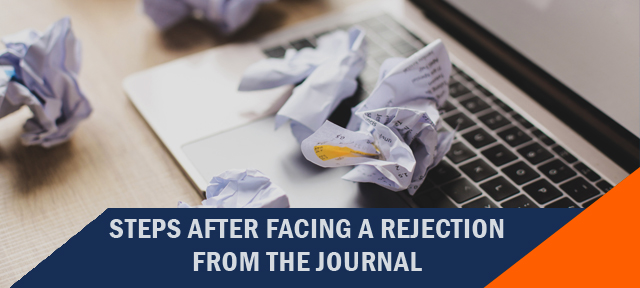Writing and submitting scholarly documents takes a significant amount of period and work. It is an iterative procedure to publish a scientific paper. When you put a lot of effort into a paper, hearing its rejection can be upsetting. It is crucial to remember, however, that comparatively more manuscripts are vetoed than approved. In an ideal world, a meticulously designed final product would be ready to share right away.

If the paper gets rejected before the peer review process, then the reason for the rejection may be the mismatch of Aim and Scope of the journal to the paper. In this case, the author should proceed to the next journal without wasting much time.
If you believe the rejection decision was made unfairly or that the review process has fundamental faults, you have the right to plea as the author. A number of journals have a procedure for appealing editorial decisions that are made public. It is essential to remember that, as painful as rejection is, you should appeal based on reasoning rather than emotion.
Process for revising journal papers
This is definitely the best option if an author wants to publish in a specific journal and the journal editor has stated that they will accept the manuscript if proper modifications are done. A ‘reject and resubmit verdict is comparable to a ‘revise and resubmit verdict. This verdict characteristically designates that the journal editor saw potential worth in the theme or idea for the article but does not trust that it has been fully developed yet, either conceptually or in writing. One may choose at this stage to resubmit to a different journal, and not revise. Resubmitting a revised and more fully developed manuscript, especially if the decision came from a top-tier journal, is usually the superior option.
- Do an initial assessment
- Set yourself up for the revision
- Outline the response and changes strategy in the answers document
- Iterate on the answers/changes strategy
- Change the manuscript
- Finalize the answers document
- Final checks
- Resubmit!
Principles to keep in mind while revising
We merely need to present the editor and the reviewers all of our work once we’ve addressed all of the reviewer comments. This involves properly labeling and cross-referencing all comments, as well as outlining what modifications have been made in response to each comment and where to locate them. This also entails searching for new related literature that has appeared since the paper’s submission and including it where appropriate (some of it may even be useful in responding to the reviewers’ remarks!). The only exception to this exhaustiveness may be a description of every minute modification you probably had to make to get the entire article to flow and read properly again after all the revisions; perhaps just a handful of instances will suffice. The responses paper does not have to belong only for the sake of length!

